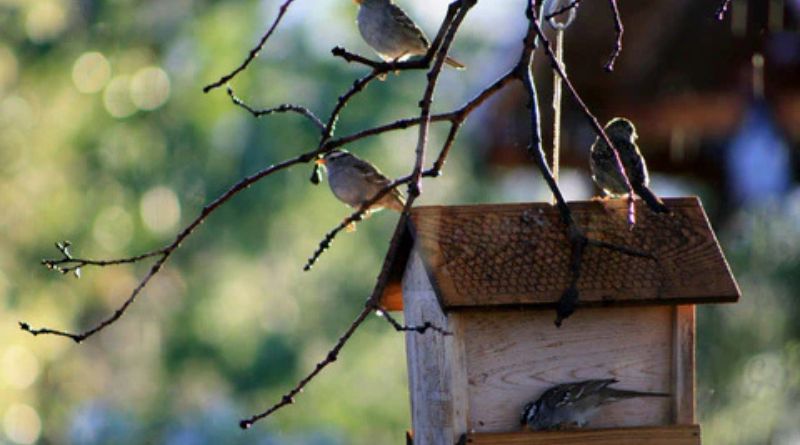If you’re a bird enthusiast, having a well-equipped bird feeding station can transform your backyard into a vibrant wildlife sanctuary. One of the most essential tools for setting up such a station is a bird feeder pole. Whether you’re looking to attract a variety of bird species, keep feeders safe from predators, or simply create a more organized and accessible space for bird feeding, bird feeder poles are an indispensable part of the setup.
In this article, we’ll explore everything you need to know about bird feeder poles, including what they are, the different types available, how to choose the right one for your yard, and the benefits of using them. Additionally, we’ll address some frequently asked questions to ensure that you can create the ideal bird-feeding environment in your own backyard.
Table of Contents
What is a Bird Feeder Pole?
A bird feeder pole is a vertical support structure designed to hold bird feeders, bird baths, or even other bird-watching accessories such as nesting boxes or suet cakes. These poles elevate bird feeders off the ground, making them more accessible to birds while keeping the feeders away from common ground predators like squirrels, raccoons, and cats. Bird feeder poles are available in various designs, heights, and materials to suit different types of feeders and the specific needs of your outdoor space.
In addition to supporting bird feeders, some poles come with features like hooks, trays, or even multiple arms, allowing you to hang several different types of feeders on a single pole. This helps create a more efficient and organized feeding station, ensuring that birds of all types have access to food.
Types of Bird Feeder Poles
There are several different types of bird feeder poles, each suited for specific purposes or types of bird feeders. Below, we’ll explore the most common types:
1. Single-Pole Bird Feeder Stands
These are the most basic type of feeder pole. Typically consisting of a single, straight pole, these stands are ideal for hanging one or two feeders. These poles can be installed directly in the ground or mounted to a base for stability. They are usually made of metal or durable plastic and come in various heights, usually ranging from 4 to 8 feet.
Best for: Homeowners who want a simple, low-maintenance setup for one or two bird feeders.
2. Multi-Feeder Poles
Multi-feeder poles are designed with multiple arms or hooks, allowing you to hang several different types of feeders on the same pole. These poles can support various feeders, such as seed feeders, suet cages, and nectar feeders, creating a comprehensive bird feeding station in a small space. These poles are often made of sturdy metal to support the weight of multiple feeders and withstand wind and other outdoor elements.
Best for: Birdwatchers who want to attract a variety of bird species by offering different types of food (seeds, suet, nectar, etc.).
3. Squirrel-Proof Bird Feeder Poles
One of the most common challenges in bird feeding is keeping squirrels away from the bird feeders. Many bird feeder poles are designed with features that deter squirrels from reaching the feeders. These can include poles with a metal baffle, which prevents squirrels from climbing up, or those with a smooth, slippery surface that makes it difficult for them to climb. Some models also include a spring-loaded mechanism that will shut off the feeder if a squirrel or other large animal tries to access it.
Best for: Homeowners in areas with a high population of squirrels and other animal pests.
4. Decorative Bird Feeder Poles
If you’re looking to add a decorative element to your backyard while attracting birds, decorative bird feeder poles might be the right choice. These poles are designed not only to hold bird feeders but also to enhance the aesthetic of your garden or yard. They come in various artistic designs, including wrought-iron scrollwork, vintage-style finishes, and decorative elements that complement your outdoor decor.
Best for: Homeowners who want their bird feeding setup to blend seamlessly with the surrounding garden or landscape.
5. Heavy-Duty Bird Feeder Poles
For those who live in areas with harsh weather conditions or heavy winds, heavy-duty bird feeder poles are designed to withstand extreme conditions. These poles are often made of galvanized steel or other strong metals to ensure stability and longevity. They are perfect for homeowners who need a sturdy, reliable option that can hold multiple feeders and endure rough weather conditions.
Best for: Homes in regions with high winds, heavy snow, or extreme temperatures.
How to Choose the Right Bird Feeder Pole for Your Yard
Selecting the best bird feeder pole depends on several factors, including your space, the types of birds you want to attract, and the kind of feeders you plan to use. Here are some tips for choosing the right bird feeder pole:
1. Consider the Type of Birds You Want to Attract
Different birds prefer different types of food. For example, hummingbirds prefer nectar, while woodpeckers are attracted to suet, and finches love seeds. Choose a bird feeder pole that accommodates the types of feeders you plan to use. A multi-feeder pole may be ideal if you want to offer a variety of food types to attract a wide range of birds.
2. Height Matters
The height of the pole is important for both bird accessibility and protection from predators. A bird feeder pole should ideally be placed at a height of 5 to 8 feet to keep feeders out of the reach of most predators, including squirrels, raccoons, and dogs. However, consider the space available in your yard and any obstructions (like trees or fences) that may affect the pole’s placement.
3. Material and Durability
Bird feeder poles come in various materials, including steel, aluminum, plastic, and wood. Steel poles are durable, rust-resistant, and great for heavy-duty use, while aluminum poles are lightweight and resistant to rust but may not support heavier feeders. Consider your local climate and how much exposure the pole will have to the elements when choosing the material.
4. Squirrel Protection
If you have a squirrel problem in your area, a squirrel-proof bird feeder pole might be your best option. These poles are designed to either prevent squirrels from climbing or have features like baffles to stop them from reaching the feeders.
5. Ease of Installation
Check the installation requirements of the bird feeder pole. Some poles require digging into the ground, while others can be easily placed in a pot or mounted onto a base. If you’re not sure about digging or installing poles in the ground, look for models that can be set up quickly and easily.
Benefits of Using Bird Feeder Poles
Bird feeder poles offer several key benefits that make them a popular choice for backyard birdwatching enthusiasts:
1. Keeps Feeders Away from Predators
By elevating bird feeders off the ground, bird feeder poles help keep them safe from predators such as squirrels, raccoons, and even stray cats. This ensures that the birds have a safe place to feed without being disturbed by other animals.
2. Enhances Birdwatching Opportunities
With a bird feeder pole, you can position feeders in areas that are easily visible from your home. This provides a fantastic opportunity to observe various bird species in their natural habitat, especially if you have a variety of feeders that attract different types of birds.
3. Organizes Your Feeding Station
Using a pole to organize your feeders can help create a tidy and efficient feeding station. Multiple arms or hooks on a single pole allow you to hang different types of feeders without the need for separate stands, making it easier to manage and maintain.
4. Prevents Feeder Damage
When bird feeders are placed on the ground, they can be easily damaged by weather, animals, or even by children playing. Elevating feeders with a pole helps protect them from such damage and extends their lifespan.
FAQs About Bird Feeder Poles
1. How do I keep squirrels away from my bird feeder pole?
- To prevent squirrels from accessing your bird feeders, you can use a squirrel-proof pole that features a baffle, or opt for a pole with a slippery surface. Some poles are also designed with spring-loaded mechanisms that close the feeder when a heavy animal like a squirrel tries to land.
2. Can I install a bird feeder pole without digging into the ground?
- Yes! Many bird feeder poles come with bases or stands that allow you to set them up without digging. These models can be placed in a pot, on a patio, or in any area where you have flat ground.
3. How do I clean a bird feeder pole?
- Cleaning a bird feeder pole is simple. Wipe it down with a damp cloth to remove dirt or debris. If you have multiple feeders on the pole, it’s a good idea to clean the feeders regularly as well to prevent the spread of diseases among birds.
4. Can I use a bird feeder pole with a birdbath?
- Yes, many bird feeder poles come with a feature that allows you to hang a birdbath or attach a tray at the base. This creates a dual-purpose station that can attract birds looking for both food and water.
5. How tall should a bird feeder pole be?
- A bird feeder pole should be around 5 to 8 feet tall. This height keeps feeders out of reach of common predators, while still being accessible to most birds. Taller poles may be necessary in areas with larger predators, such as squirrels or raccoons.
Conclusion
A bird feeder pole is an essential tool for creating a safe, organized, and accessible feeding station for birds. Whether you
’re looking to attract a variety of species, protect your feeders from predators, or add a decorative element to your backyard, choosing the right pole can make all the difference. By considering your space, the types of birds you want to attract, and the specific features you need, you can create a bird-friendly environment that offers both enjoyment and support for your local wildlife. Happy birdwatching!



